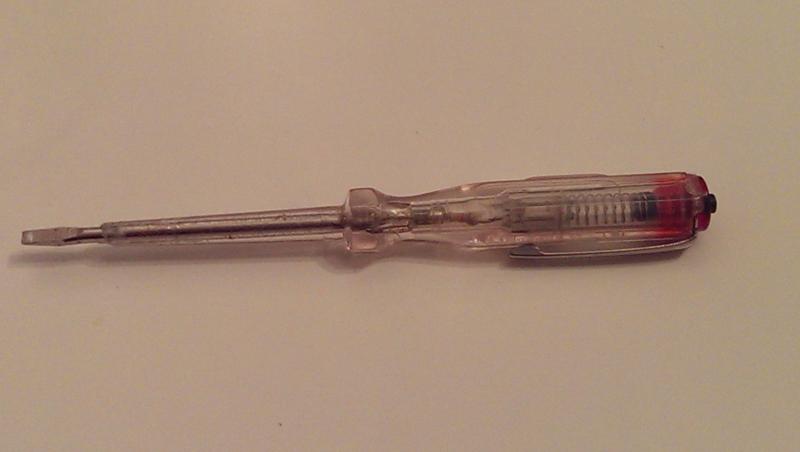I wouldn't really saying that I was 'suggesting it as a possible answer' - since, as both I and (now) you have said, that really should have been picked up, either in the past or during the recent investigations.
Sorry John, I wasn't trying to lay it all on you

What I did say was that I cannot (yet!) think of any other explanation for your experiences with your neon screwdriver. Assuming you haven't taken advice and thrown it out, is it still the case that, now, it still lights up when you touch any tap in any bathroom? What about when you touch it on CH radiators/pipes etc. (assuming you can find some bits that aren't covered in paint!) throughout the house, or the metal cases (again, assuming you can find paint-free bits) of plugged-in appliances like washing machines etc.?
Kind Regards, John
Inspired by your question I sauntered off to find my neon, now as it happens I have three

Two of the push-button with spring inside types and one that just has a metal cap. Now I never use them (normally) to detect electricity so for all I know, none of them work. Hopefully the following makes sense.
If I use either of the push-button types, hold it against anything metal, they don't light, with or without the button pressed in (can you tell I don't normally use them for detecting electricity!).
If I use the other one I have with a metal cap, if I hold it to any pipework, tap, unpainted radiator part, it lights brightly if I put my thumb on the cap at the top. If I don't put my thumb on it doesn't light up.
I also have one of those light-up plastic voltage detector pens, which does not light up when offered to pipework etc. I have used this before to check power to light switches and the like very reliably in the past, so I trust it... as much as I trust anything at this point!
So, on the balance of probability, three of the four devices I've used, show nothing... so why do my fingers tingle and why am I still suspicious..?

[Edit] Can I just say, without being sycophantic, how much I appreciate all of the contributions to my thread, as you can tell I am no expert, I just know enough to know when to be suspicious... I am in IT so have a fairly diagnostic mind generally speaking (don't attack me

), so usually with enough information I can work things out, but this is well beyond my skillset





